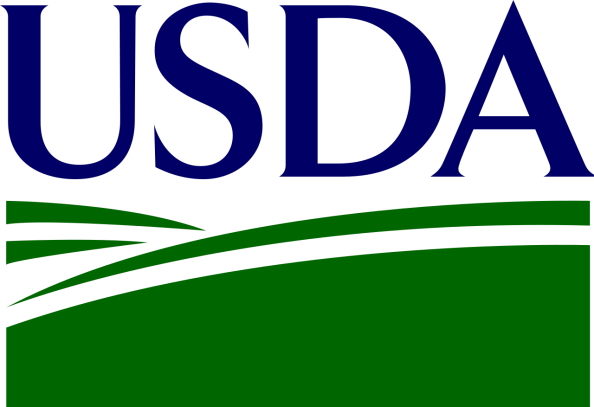A refresher from the DC folks. Under the President’s National Strategy, as well as through other existing efforts, USDA is working to build healthy habitat for pollinators, conduct research to better understand the causes of their population declines, and raise public awareness about steps that all of us can take that will help to boost their numbers.
Improving pollinator habitat and forage:
- Through the Farm Service Agency’s Conservation Reserve Program, 15 million acres of privately owned land are enrolled in conservation practices that benefit pollinators. Of these, 269,000 acres are enrolled in a special pollinator-specific initiative, but these creatures are also helped by several other Conservation Reserve Program practices on private land.
- USDA is collaborating with the U.S. Geological Survey to measure honey bees’ use of conservation covers and assess the effectiveness of conservation efforts to help honey bees.
- USDA’s Natural Resources Conservation Service (NRCS) offers more than three dozen conservation practices that can benefit pollinator habitat. In early FY 2016 NRCS announced the Monarch Butterfly Habitat Development Project and up to $4 million to establish and improve habitat. This monarch effort builds on a similar targeted honey bee effort in the Midwest/Northern Plains, and will lead to other natural resource benefits, such as improved water quality, healthier soils and more productive working lands.
- The U.S. Forest Service is restoring and improving pollinator habitat on national forests and grasslands, as well as working with nations with which we share a border, and conducting research on pollinators.
- USDA has distributed 375,500 pollinator-friendly seed packets across the country increase pollinator habitat in both urban and rural areas.
Conducting and supporting research into pollinator health:
- Over the past six years, the USDA’s Agricultural Research Service (ARS) alone has invested more than $82 million in cutting-edge pollinator research and over the past decade has published nearly 200 journal articles about pollinators. ARS maintains a list of these articles online.
- The Agricultural Research Service maintains four laboratories that conduct research into bee genetics, breeding, biology and physiology, with special focus on bee nutrition, pathogens and parasites, the effects of pesticide exposure and the interactions between each of these factors.
- Researchers at ARS’ Beltsville Bee Lab have just “swapped” bees with a West Virginia beekeeper to try to replicate successful management practices to lower overwintering mortality rates. ARS researchers will study the borrowed bees’ basic biology and genetics to try to pinpoint whether their increased survival is due to better genetics, better management, or both.
- ARS is organizing a new National Bee Genebank to ensure that the genetic diversity of honey bees, especially for traits such as resistance to pests or diseases and pollination efficiency is preserved.
- USDA’s National Institutes of Food and Agriculture (NIFA) has funded research by the University of Nevada to identify a treatment for American foulbrood, a bacterial disease that affects honey bees.
- Michigan State University is also using a grant from NIFA to research sustainable pollination strategies and evaluate the effects of farm wildflower enhancements to increase wild bee diversity and crop yields. NIFA is currently seeking applications for a total of $16.8 million in grant funding for additional research projects with an emphasis on pollinator health.
- In May, USDA’s National Agriculture Statistics Service (NASS) released the results of its first ever Honey Bee Colony Loss survey, which will provide statistically strong baseline information about honey bee losses and can help guide honey bee management decisions in the United States. NASS created the survey questions with input from beekeepers and researchers, and other stakeholders. The results will allow USDA and other federal departments and agencies to create a more unified and complementary approach to implementing the National Strategy.
- Since 2007 the National Science Laboratories (NSL), a part of the Agricultural Marketing Service, has provided pesticide residue testing services to honey bee stakeholders, supporting research into honey bee health issues. As part of the long-term efforts focusing on the causes of honey bee decline, the NSL tests a broad range of pesticide residues in honey bee products—including pollen, beeswax, honey, nectar, royal jelly and the bees themselves.
Connecting people and pollinators:
- As a member of the Pollinator Health Task Force, USDA’s People’s Garden Initiative has launched a number of efforts to expand pollinator public education programs and outreach including: engaging youth and families with the interactive online tool Plant a Window Box for Pollinators, disseminating best practices and resources for planting a pollinator-friendly garden, and supporting a unified campaign for National Pollinator Week by hosting the annual Pollinator Week Festival.
- Two beehives were installed on the roof of the Jamie L. Whitten Building in 2010. Beekeepers from USDA’s Agricultural Research Service, Bee Research Laboratory in Beltsville, Maryland care for the 80,000 honey bees. The foraging bees pollinate The People’s Garden as well as the surrounding landscapes and have produced 22 gallons or approximately 264 lbs. of honey since 2010. Anyone with access to a computer can watch the USDA bees through our livestreaming bee cam.
- USDA has installed 20,740 square feet of pollinator-friendly landscaping at the USDA Headquarters complex since 2009 with more to come.
- 2,512 community gardens located in all 50 states, three U.S. territories and twelve foreign countries are registered as People’s Gardens and directly support pollinators.
- USDA is hosted its seventh annual Pollinator Week Festival on Friday, June 24 to highlight the work of USDA agencies, other federal departments and partners to save pollinators.
- ARS is cooperating in teaching beekeeping workshops to veterans and about-to-transition from-active-service personnel, who find working with honey bees to be therapeutic and stress relieving as well as offering job potential.









